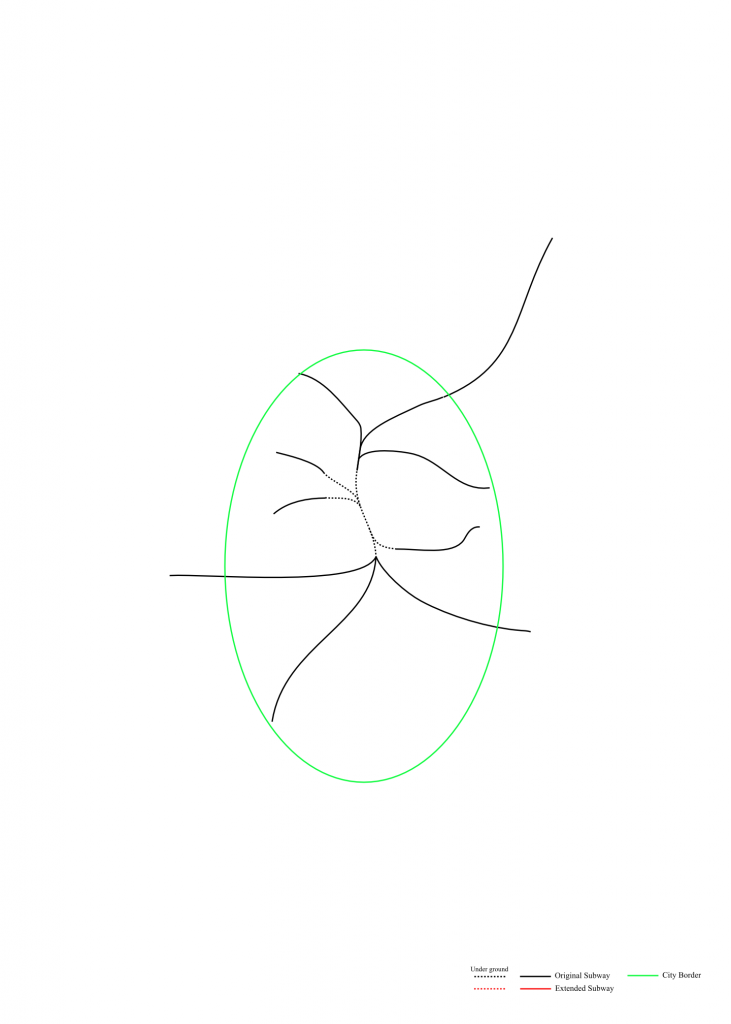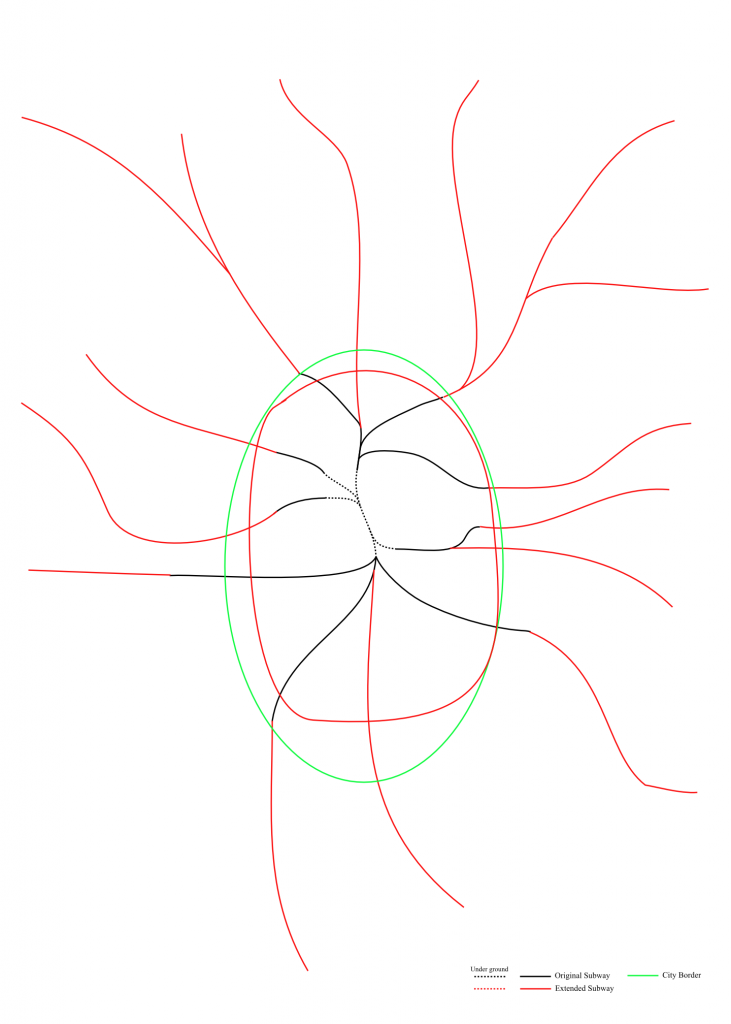A public transportation system like the one described in Dynamic Public Transport will on one side open for a much higher number of stations than e.g. a subway system has today. On the other hand it would require a pretty high number of daily passengers to pay the extra lines and stations necessary to make it the flexible system it would be. But an effective system would then give the passengers I would assume…
In the following illustration a fictive subway net of a middle sized city is drawn, where the green circle indicates the city border.
This net could be extended in phases and end up something like in this illustration.
Phase 1
A ring line is build connecting the existing lines. Simultaneously the train and control technology development is started. The net is in the meantime operated with ordinary but shorter subway sets at a higher frequency and with alternative routes made possible by the ring.
Phase 2
The Dynamic Public Train sets are entered and the main lines are extended geographically. The extensions will pay of economically because of the lower costs of building lines on the country side compared to in and near the city.
Phase 3
The main lines are branched off in a tighter net with stations with short distance between them. These are possible to build out and connect to the main lines with few disturbances in the daily traffic.

